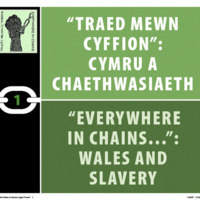
Everywhere in Chains: Wales and Slavery
Everywhere in Chains was an umbrella project created for the bicentenary commemorations in 2007, by a collaboration between Amgueddfa Cymru - National Museum Wales, the National Library of Wales, University of Wales, Bangor and CyMAL: Museum Archives and Libraries Wales (part of the Welsh Assembly Government). An exhibition explored Welsh involvement in slavery, especially focusing on the transatlantic slave trade and its abolition, the Black presence in Wales, and legacies of slavery. This was shown at the National Waterfront Museum in Swansea from May to November 2007 before touring to Wrexham County Borough Museum. The touring version of the exhibition was funded by the Welsh Assembly Government. The exhibition in Wrexham included discussion of the painting 'A Negro Coachboy', thought to commemorate a black servant of John Meller, owner of the Erddig estate in the 18th century.
Alongside the exhibition, the Everywhere in Chains programme also included lectures, formal learning activities and performances. An educational pack was produced by CyMAL and distributed to every school in Wales in 2009-2010. A community project created a forum in which participants from many cultural backgrounds could voice their ideas about enslavement. The Everywhere in Chains Community Heritage Toolkit captured the learning from this project. The toolkit, launched in 2009, was produced to help individuals, groups and organisations to work with culture and heritage providers to undertake projects focused on the role of Wales in the transatlantic slave trade and issues of modern slavery.
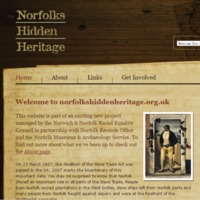
Norfolk's Hidden Heritage
Norfolk’s Hidden Heritage was a partnership project between the Norwich and Norfolk Racial Equality Council (NNREC), the Norfolk Record Office (NRO) and the Norfolk Museums and Archaeology Service (NMAS) which researched the links between Norfolk and transatlantic slavery. For example, many slaving voyages left England from King's Lynn, while the Dalling family of Norfolk owned the Donnington Castle plantation in Jamaica. The exhibition, curated by Norfolk Record Office, won an award for the Best Black History Project for the East of England from the Black History Society. The website provided an interactive timeline to trace Norfolk’s Hidden Heritage from 1670 to today. There was also a database to search for important people, places and dates. Workshops were run in a number of schools, and information packs distributed. More widely, the project worked with the University of East Anglia, Norwich City College, the Prison Service and the Youth Offending Team. As part of the project, Norwich Academy Drama Group put together the production 'Diary of a Son of Africa', about an enslaved African who eventually gained his freedom.
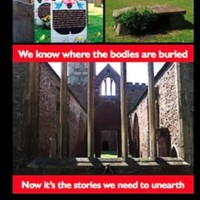
Diverse Stories
The Diverse Stories project began in 2007 with participants from Malcolm X Elders, an Afro Caribbean elders and community group in Bristol, taking part in a creative writing project to mark the bicentenary. This was jointly supported by Show of Strength Theatre Company, Our Stories Make Waves and English Heritage. Participants visited the ruined Temple Church in Bristol and explored its links with the slave trade and abolition movement. Their responses included a range of dramatic monologues covering themes such as slavery, racism, trade, childhood memories of Jamaica and migration from the Caribbean. These were read at a performance by a professional actor. In 2008 the project was given a permanent record by a selection of the stories being recorded on audio CD.
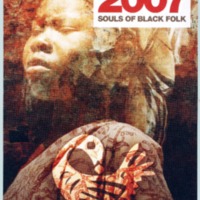
Black History Season Leicester 2007: Souls of Black Folk
Leicester's Black History Season in October-November 2007 marked the bicentenary of the abolition of the slave trade. Its aim was to redress the balance from a 'Eurocentric point of view' of abolition, and focus on the Afrikan perspective with the theme of 'Souls of Black Folk'. Musical performances included gospel, Motown, reggae and jazz. Other events in venues across Leicester and Loughborough included traditional South African dance, contemporary dance, performance poetry, comedy, multimedia performances, storytelling, theatre and an exhibition, 'Africa's Gift', focusing on the economic and cultural contributions of the slaves and their descendants.
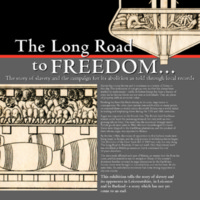
The Long Road to Freedom
As made clear by The Long Road to Freedom exhibition in 2007, the Record Office for Leicestershire, Leicester & Rutland contains a significant collection of documents which reveal local connections with the slave trade, and with those who campaigned for abolition. Several prominent local families owned slaves on plantations in the Caribbean and on the north coast of South America. Leading Leicester abolitionists, Elizabeth Heyrick and Susanna Watts, orchestrated a vigorous anti-slavery campaign in Leicester, including a boycott on sugar. Local landowner, Thomas Babington of Rothley Temple, was a friend of William Wilberforce and hosted meetings of anti-slavery campaigners at his home. The exhibition also highlighted a unique collection of mid-19th century papers which provide access to the voices of the enslaved in a slave court in Lagos, West Africa. It also told the stories of two former slaves, Rasselas Morjan and Edward Juba, who came to Leicestershire with their owners. This exhibition toured to various venues in the region, including Abbey Pumping Station, where it coincided with family activities focused on the work of Elizabeth Heyrick.
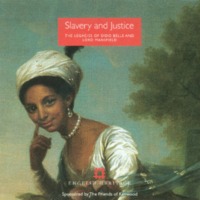
Slavery and Justice: The Legacies of Dido Belle and Lord Mansfield
Kenwood House in North London is closely connected to the history of the slave trade through the lives of two of its former inhabitants. Lord Chief Justice Lord Mansfield made a milestone ruling in 1772 towards abolition of the transatlantic slave trade. Dido Elizabeth Belle - born to an enslaved mother - is believed to have been Lord Mansfield's illegitimate great-niece. This exhibition by English Heritage, and sponsored by the Friends of Kenwood, explored their relationship, and the social dimensions of the British slave trade intertwined with the history of Kenwood. Visitors to the exhibition were invited to leave a creative literary response. The Wall of Words, a literary mural in the form of a poem inspired by the recorded responses, was created by Beyonder, a multimedia artist and educator.
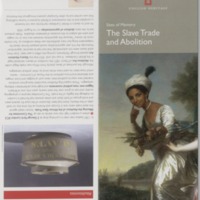
Sites of Memory: The Slave Trade and Abolition
The Sites of Memory project was the first research by English Heritage (now Historic England) to provide an overview for the public of the buildings, memorials and grave sites across England that reflects the role of the slave trade in British history, and resistance to it. The project explored the history of Black people in Britain during the 18th and 19th centuries by exploring the stories behind the historic built environment of local streets, buildings and landmarks. The research (by historians Angelina Osborne and S. I. Martin, on behalf of English Heritage) also identified sites associated with the slave trade and plantation wealth, and with the abolitionists who campaigned for an end to slavery. English Heritage also made recommendations for new listings for historic sites that mark the Black presence.
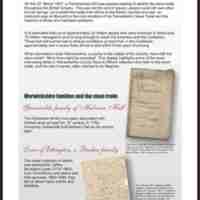
Slavery: A Warwickshire Connection?
An exhibition exploring the connections between Warwickshire and the transatlantic slave trade, using the collections held at Warwickshire Record Office. Several Warwickshire families owned plantations in the Caribbean, such as the Greatheed family of Guy's Cliffe who owned an estate in St Kitts. Vice Admiral Lord Hugh Seymour was prominent in the West Indies as Commander of Britain's naval forces in the Leeward and Windward Islands. Church of England parish registers reveal the presence of black people in Warwickshire's history.
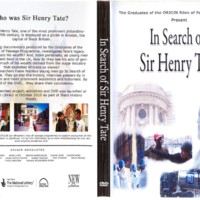
In Search of Henry Tate
A bust of Sir Henry Tate, one of the most prominent philanthropists of the 19th century, is displayed on a plinth in Brixton. A group of young men from the ORIGIN Rites of Passage Programme produced a documentary to investigate Tate's legacy and, in particular, the tensions inherent in his acts of generosity being funded by wealth derived from sugar production. The documentary featured interviews, research, and trips to Tate & Lyle plants and buildings. New Initiatives, a youth and community association, developed ORIGIN as an Africentric rites of passage programme, to support young men of African descent in their transition to adulthood. The project, exhibition and DVD was launched at Brixton Tate Library in October 2010.
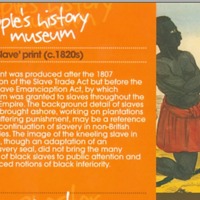
Revealing Histories: Remembering Slavery (People's History Museum)
Events at the People's History Museum in Manchester included a Revealing Histories trail, which highlighted museum objects with links to slavery, such as 'The Slave' print from the 1820s. A living history performance, 'How do you plead?', featured a representation of the Chartist leader William Cuffay, whose campaign for the right to vote saw him transported to Tasmania for treason.
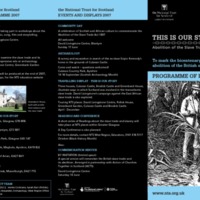
This is Our Story
To mark the bicentenary, the National Trust for Scotland put together a wide-ranging programme of events to engage their audiences with Scottish connections to slavery and abolition. Three National Trust for Scotland properties in the West of Scotland – Culzean Castle, Brodrick Castle and Greenbank House – illustrate the ways in which Scotland was involved in the transatlantic slave trade. A touring exhibition based on this new research was shown at these sites and others in the West of Scotland. The Beckford Collection of furniture, silver and China at Brodrick Castle, on the Isle of Arran, once belonged to William Beckford, owner of several sugar plantations in the West Indies. Scipio Kennedy from ‘Guinea’ lived at Culzean Castle, Ayrshire, from 1710, first as a slave and then as a paid servant. The Allason brothers of Greenbank House were traders in tobacco and slaves. David Livingstone spent much of his life campaigning against the slave trade based in East Africa. His work is remembered at the David Livingstone Centre in Blantyre.
The 2007 Learning Programme involved workshops for local community groups and a resource pack for teachers and youth leaders. Events included a celebration of Scottish and African culture at the David Livingstone Centre; a survey and excavation in search of the ex-slave Scipio Kennedy’s home in the grounds of Culzean Castle; and a Commemoration Service arranged in partnership with Action of Churches Together in Scotland (ACTS).
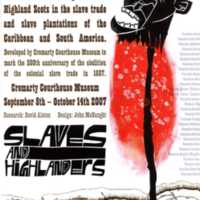
Slaves and Highlanders
An exhibition developed by Cromarty Courthouse Museum in the Scottish Highlands recording the role of Highland Scots in the slave trade and slave plantations of the Caribbean and South America and, in particular, British Guiana. The striking illustrations were by John McNaught. The exhibition told individual stories of Scottish merchants, plantation owners and their slaves, such as a slave called Inverness, bought, sold, exploited and hunted as a runaway by Scots in Demerara. It also looked at the freed slaves who found a place in Scottish society. Connected to this project was the placing of a plaque in the former Royal Northern Infirmary (now the executive office of the University of the Highlands and Islands). It remains one of the few acknowledgements of the use of profits from the slave plantations to fund charitable public institutions, and the only known one in Gaelic.
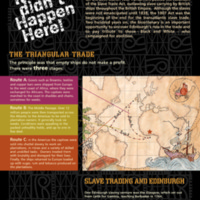
It Didn't Happen Here! Edinburgh's Links in the Trans-Atlantic Slave Trade
This exhibition at the Museum of Edinburgh explored the city's links to the slave trade and, in particular, trading connections with the Americas. Imports to the Port of Leith from North America and the West Indies included tobacco, rum, sugar, cotton, rice and indigo. The exhibition looked at Scots who sought fortunes in the West Indies, as well as Black residents who made their homes in Edinburgh. It also explored Edinburgh's connections to the abolition movement.
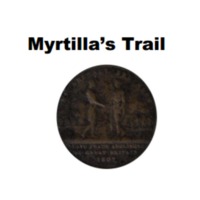
Myrtilla's Trail
Myrtilla’s Trail was developed at Leamington Spa Art Gallery & Museum in partnership with poet Brenda Tai Layton, using objects, images and texts to explore local links with the slave trade. Myrtilla, 'Negro slave to Mr Tho. Beauchamp', is buried in the village of Oxhill in Warwickshire. Apart from her gravestone (dated 1705), she remains anonymous. Warwick District has connections with slave owners, such as the Greatheed family of Guy's Cliffe, sugar plantation owners in St Christopher (St Kitts). This trail around the galleries offered a starting point for exploring these complex and often hidden histories, including busts and documents of the Greatheed family, abolitionist coins, protest songs, and travel posters.
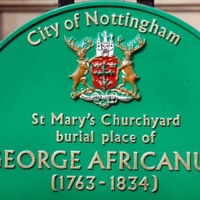
Rededication service for George Africanus
George John Scipio Africanus (1763-1834) was Nottingham's first recorded black entrepreneur, starting an employment agency called the 'Africanus Register of Servants'. As a child, Africanus was brought to England from Sierra Leone and given as a present to wealthy Wolverhampton businessman Benjamin Molineux. He then moved to Nottingham and became a freeholder. Nottinghamshire Archives and MLA East Midlands produced web resources for teachers and learners based on the life of George Africanus. An exhibition toured venues around the city, including Nottingham Council House and Brewhouse Yard. On 25 March 2007, as part of the bicentenary events in Nottingham, a service was held at St Mary's Church led by the Bishop of Kingston (Jamaica), the Rt Revd Robert Thompson. A new memorial stone was dedicated to Africanus, and a plaque unveiled commemorating his life.
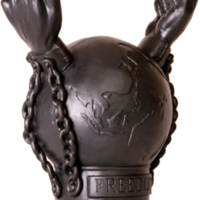
Abolition of the Slave Trade Act Commemorative Exhibitions
Nottingham Castle Museum held two exhibitions in 2007. Inspired by the anti-slavery medallion produced by Josiah Wedgwood in the 1790s, a group of young people from Nottingham’s African Caribbean community worked with artist Katherine Morling to explore issues surrounding slavery and the representation of black people in art. The group worked under the name Sankofa. The ceramic Globe of Freedom was fired at the Wedgwood factory in Staffordshire, and was displayed at Nottingham Castle Museum alongside the Wedgwood medallion. The word ‘FREEDOM’ is impressed on one side and ‘EQUALITY’ impressed on the other. A replica sculpture is still used as part of a handling collection loaned to schools and community groups in the Nottingham region. A second exhibition, in collaboration with the Open University in the East Midlands, looked at the British slave trade using slave narratives, telling the story of three survivors of slavery: Mary Prince, Robert Wedderburn and Quobna Ottobah Cugoano.
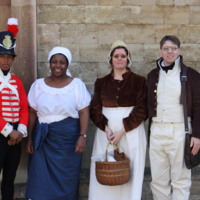
Beyond the Bicentennial
In collaboration with the Peterborough branch of the African Caribbean Forum, Peterborough Museum hosted 'Beyond the Bicentennial, 1788-1838: Exploring 50 Years of the Slave Trade'. The exhibition's focus was the fifty years leading up to the end of slavery in the British Empire, 1833. It highlighted museum objects and local connections to the era of abolition, including black communities in Peterborough and links between slave-produced sugar and the rise of tea drinking in Georgian Britain. Two special event days included Georgian period re-enactors, historical talks on slavery, African drumming workshops, African food tasting and community displays.
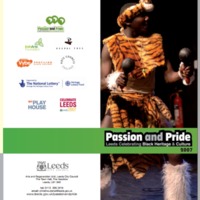
Passion and Pride
Passion and Pride was a creative partnership project bringing together Leeds City Council's Arts and Regeneration Unit with twelve local community organisations. Building on momentum established through Black History Month, the performances, exhibitions and workshops celebrated black heritage and culture in Leeds during 2007. Highlights included the performance of 'Grandma's Story' at West Yorkshire Playhouse by the 10-2 Club, a short play about the real life experience of living through slavery.
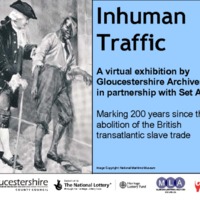
Inhuman Traffic
The Inhuman Traffic project was led by Gloucestershire Archives, in partnership with the Set All Free initiative. The virtual exhibition and accompanying web resource were based on documents held at Gloucestershire Archives and, in particular, the papers of the anti-slavery campaigner Granville Sharp (1735-1813). The exhibition explored topics such as the contribution of black people to the abolition movement, aspects of the legacies of slavery, including racism and domestic violence. Over 400 copies of the exhibition DVD were sent to schools, churches, tourist information venues and individuals across Gloucestershire. The associated programme of events included performances of the play 'Inhuman Traffic', developed in collaboration with a local theatre company, Spaniel in the Works. The play features four interacting characters with different perspectives on slavery. A cross-curricular teaching resource was later developed, which included a second performance, 'Master and Slave', in partnership with Stroud District Museums Service, Spaniel in the Works, and Parliament Primary School, Stroud.
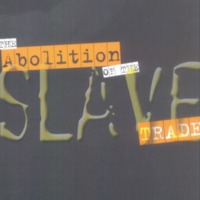
The Abolition of the Slave Trade
Kirklees Council ran a range of events in 2007, focused on local connections with slavery and abolition. Kirklees Civic Sunday was the official commemoration at Huddersfield Parish Church, with a performance by a local gospel choir and a presentation by actors as historical characters. The links between Yorkshire and the Caribbean were also explored: 8,500 people of African-Caribbean descent live in the borough of Kirklees. Events such as the Jamaica National Independence Cultural Festival, Deighton Carnival and Huddersfield Carnival celebrated African and Caribbean culture. Part of the Kirklees programme was to host the Equiano Project's touring exhibition at the Hudawi Centre in Huddersfield. The Centre went on to name one of its rooms after Equiano. Other events included talks from historians, including Richard Reddie and Paul Crooke, church services, choir concerts and theatre productions.